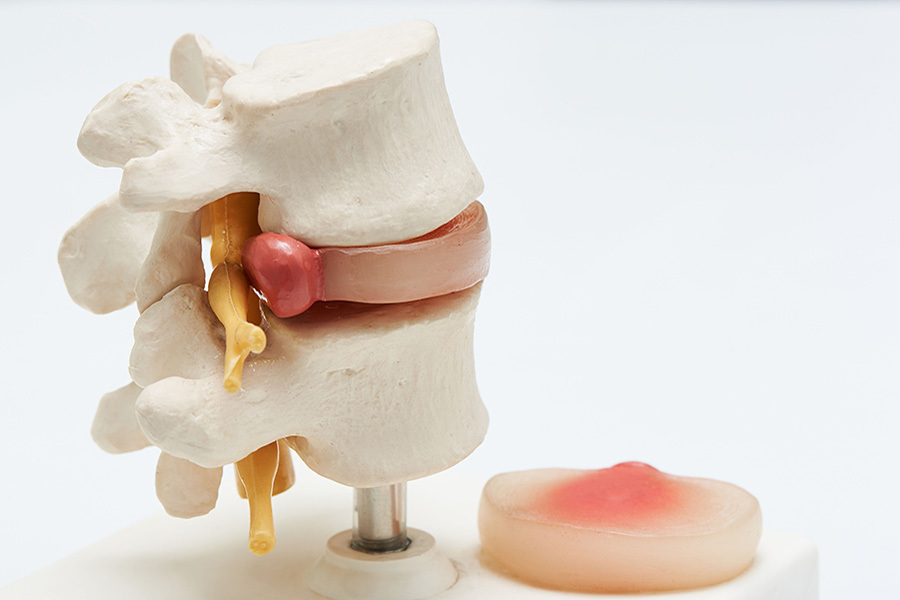Herniated discs, a prevalent source of considerable pain and inconvenience, substantially impede one’s daily life. Traditionally, treatments for herniated discs were primarily focused on non-invasive techniques, like physical therapy, pain medications, and epidural steroid injections. But now, the Arizona Pain and Spine Institute, widely recognized for its medical innovations, introduces a game-changing solution with stem cell therapy for herniated discs, particularly employing amniotic tissue allografts from Amnio Technology as an efficacious alternative.
Unveiling the Potential of Regenerative Medicine Therapy
Disc damage and related spinal issues are commonplace yet immensely challenging, particularly considering their ability to impede daily life by inducing constant discomfort and limitations. Diving deeper into the distinct disc issues allows us to explore the range of ways stem cell therapy serves as a beneficial solution:
1. Damaged Disc
A damaged disc, often characterized by a compromised structure or function, tends to disrupt the delicate equilibrium of our spine, resulting in pain and stiffness. Stem cell treatment aims at utilizing the regenerative capabilities of stem cells to rejuvenate the damaged tissues of the disc, thereby enhancing stability and mitigating pain.
2. Reduce Pain
Stem cell therapy has made significant strides in pain management, particularly in the context of spinal pain. By targeting the affected area, stem cells work to repair and regenerate tissue, which, in turn, helps to reduce pain and inflammation, offering a reprieve from chronic discomfort and enhancing the quality of life.
3. Low Back Ailments
Low back issues, such as lumbar disc herniation, can manifest as a result of various factors including age, injury, or genetic predisposition. Addressing low back pain with stem cell therapy involves introducing stem cells to the damaged area, stimulating recovery and potentially curtailing the progression of disc deterioration.
Get Back Your Normal Life Again
As pain specialists, we can guarantee that we are more than qualified in alleviating your pain and treating your condition.
4. Disc Herniation
Disc herniation, often occurring in the lower back, thrusts undue pressure on the spinal nerves, inciting pain and often, numbness. Implementing stem cell therapy for disc herniation involves meticulously targeting the herniated disc with injections, which could foster tissue repair and regeneration, alleviating nerve pressure and reducing pain.
5. Torn Disc
A torn disc, although commonly overlooked, is a substantial contributor to spinal instability and persistent pain. Stem cells, with their remarkable reparative abilities, can be introduced to the site of the tear, working towards mending the damaged fibers and potentially restoring disc integrity.
6. Degenerative Disc Disease
Degenerative disc disease significantly impacts spinal health, gradually eroding the cushions between vertebrae. Stem cell therapy aspires to delay the degenerative process, introducing regenerative cells that may revitalize existing disc cells, potentially replenishing lost fluid, and reviving disc health.
7. Low Back Pain
Chronic low back pain, an ailment that plagues a considerable portion of the population, often remains unmitigated by conventional treatment methods. Stem cell therapy, however, provides a fresh avenue for potentially long-term relief, fostering the body’s innate healing mechanism to address the underlying causes of persistent pain.
Treatment Alternatives for Herniated Discs
Non-Surgical Approaches
Conventional treatment for herniated discs typically begins with non-surgical interventions, targeting pain relief, inflammation reduction, and enhancement of overall function. Physical therapy is a fundamental part of such treatments, fortifying spinal muscles and increasing flexibility. Pain medications, especially NSAIDs, provide temporary pain alleviation and reduce inflammation. Moreover, epidural steroid injections may be recommended to relieve pain stemming from nerve root inflammation.
The application of amniotic tissue allografts by Amnio Technology, spearheaded by the Arizona Pain and Spine Institute, unveils a sophisticated solution for herniated disc-related distress. This avant-garde technique prioritizes damaged cell replacement, tissue regeneration, and pain reduction. Utilizing the inherent properties of amniotic tissue, the procedure accelerates healing, minimizes nerve irritation, reduces swelling, and fosters the repair of injured disc material, with delivery precision to the affected disc area enhanced by cutting-edge methodologies like ultrasound or contemporary X-ray fluoroscopy-guided spinal injections.
Surgical Interventions
In instances where non-surgical procedures fail to afford adequate relief, surgical options, such as microdiscectomy, might be considered. This procedure concentrates on removing the herniated disc portion that is compressing the nerve root or spinal cord to relieve pain and augment mobility.
Benefits of Stem Cell Medicine Utilizing Amniotic Tissue Allografts
How is it Implemented?
The regenerative abilities of amniotic tissue allografts are exploited to catalyze healing and repair damaged tissue. These allografts, pivotal in stem cell medicine, possess the capability to transform into various cell types, assisting in the restoration of herniated discs.
Can Amniotic Tissue Allografts Revitalize Disc Tissue?
Substantial research asserts that amniotic tissue allografts stimulate disc tissue regeneration. The growth factors and anti-inflammatory properties they possess not only enhance tissue repair but also subdue inflammation, crucially contributing to the creation of new disc cells, enabling damaged tissue regeneration, potentially diminishing pain, and rejuvenating spinal health.
Potential Hazards and Side Effects
Every medical procedure carries certain risks and potential side effects. Although the application of amniotic tissue allografts in stem cell medicine is generally considered safe, risks of infection, bleeding, or allergic reactions at the injection site do exist. It’s vital for patients to consult with adept healthcare professionals at esteemed institutions like the Arizona Pain and Spine Institute to comprehend the potential risks and advantages of the treatment comprehensively.
Where Healing Begins for Herniated Discs
Stem cell therapy opens new horizons in treating herniated discs, revolutionizing the medical field with its emphasis on the body’s inherent ability to regenerate damaged tissue. If you’re struggling with chronic back pain or are diagnosed with a herniated disc, consulting with seasoned stem cell specialists like Dr. Khan and Dr. Ryklin from Arizona Pain and Spine Institute might just alter your life’s trajectory.

